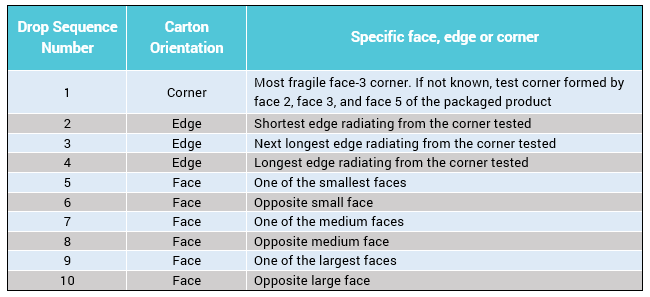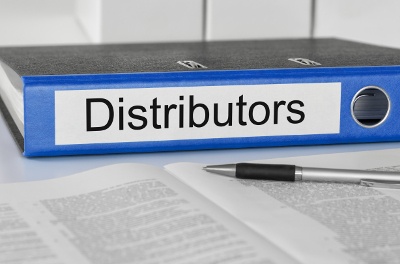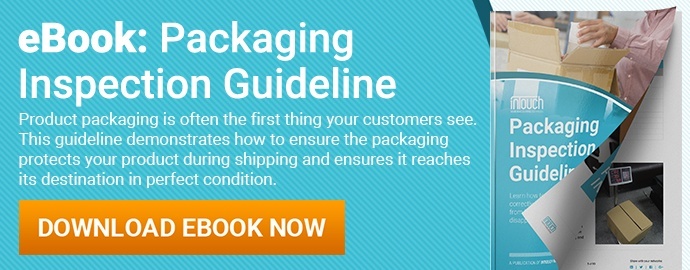 Have you ever spent hundreds of hours and thousands of dollars sourcing a product from a supplier abroad only to discover the goods are damaged when they finally reach your customers?
Have you ever spent hundreds of hours and thousands of dollars sourcing a product from a supplier abroad only to discover the goods are damaged when they finally reach your customers?
Importers often give much attention to product quality control when it comes to checking design, appearance, function and features. But a lack of attention paid to packaging quality control is most often to blame when a product is damaged or delayed during transit. And it’s a shame because other checks performed during product inspection become irrelevant when your product doesn’t survive the long journey abroad (related: Packaging Inspection Guideline [eBook]).
Your end consumer may be tearing apart and then discarding your packaging as soon as they get their hands on your product. But that doesn’t mean you should rush through determining your packaging requirements with little regard for materials, assortment and inspection. Thankfully, there are several easy packaging checks you can perform during inspection to help you confirm whether your product will reach your customers undamaged and on time.
1. Verify package assortment and quantities
Most small consumer products are packed in mass in larger shipping cartons for transport and warehousing. And in large retailer warehouses, staff won’t necessarily scan every individual product that comes into their warehouse. Rather, they may just scan one unit and input the number listed on the carton for inventory.
 But just because warehouse staff might not meticulously count each product doesn’t mean you shouldn’t pay attention to your order quantity and assortment as it leaves the factory. Ensuring you receive the right number of units per SKU is essential for keeping track of your inventory and meeting customer demand. You don’t want your product to be unexpectedly backordered right before a big holiday rush. And you certainly don’t want to receive a smaller quantity of goods from your supplier than you paid for.
But just because warehouse staff might not meticulously count each product doesn’t mean you shouldn’t pay attention to your order quantity and assortment as it leaves the factory. Ensuring you receive the right number of units per SKU is essential for keeping track of your inventory and meeting customer demand. You don’t want your product to be unexpectedly backordered right before a big holiday rush. And you certainly don’t want to receive a smaller quantity of goods from your supplier than you paid for.
An independent or third-party inspector can visit your supplier’s facility and confirm your order quantity and assortment on-site during final inspection. If you’re packing similar, but not identical, SKUs within the same carton, it’s important to check the number and proportion of each SKU packed (related: When Should You Combine SKUs for Product Inspection?). For instance, garment importers commonly ship shirts of the same style, but different colors, in the same carton.
If packaging inspection reveals incorrect assortment, your supplier may need to sort the items again by rechecking and repackaging the shipment. If left unchecked, this could result in incorrect delivery of items to customers, likely leaving you with a number of product returns and customer complaints.
2. Check sealing method and packaging materials
Temperature changes, excessive humidity and rough handling are just some of the factors that could threaten the integrity of your packaging, and the product it contains, during transit. Consideration paid to choosing packaging materials and sealing method helps ensure your product will arrive at its destination in new condition. Confirming that your supplier has packaged your product accordingly is as simple as inspecting the packaged goods before shipping.
Packaging sealing, strapping and binding methods
Sealing, strapping and binding methods can influence your packaging’s structural integrity and durability against external elements. As with many other product and packaging characteristics, an effective QC checklist typically includes a section identifying the sealing, strapping and binding methods used:
A QC checklist with detailed packaging requirements helps your suppliers understand your expectations and makes it easy to confirm them later during inspection. For example, depending on your experiences with international shipping, you might have a personal preference for a certain type of strapping method for your cartons. Metal bands are typically stronger than plastic bands, but they also have the potential to rust. Plastic strapping is also lightweight and easy to work with and dispose of.
You may also choose to specify the sealing method of inner cartons and polybags in your checklist. Even if your shipping carton is adequately sealed, the products inside could be damaged if they jostle excessively during shipment. Polybags can be sealed in a number of ways, from vacuum sealing by a machine to a simple piece of tape placed over the opening. Any point worth checking is worth including in a QC checklist you provide to your supplier and inspection team.
Packaging quality control checks for appropriate packaging materials
Your QC checklist should also include a section detailing the types of packaging materials you expect for the shipping carton, inner cartons and internal packaging. For the shipping carton and inner carton, you should specify any requirements you have for both the color and the ply of cardboard:
Internal protective materials can vary from Styrofoam peanuts, bubble wrap, foam, air pillows or just large sheets of paper. For some non-breakable products, like garments or plush toys, some of these materials would be excessive. But importers of less fragile products should still check packaging materials during inspection. Some retailers might actually forbid you from using certain types of materials or request that you use sustainable ones.
3. Check shipping markings and barcodes
You’re much more likely to face shipping delays if carton markings or barcodes are incorrect, missing or illegible. And yet the presence of incorrect shipping markings or barcodes is one of the most common defects found during packaging inspection. Luckily, you or your inspector can easily check markings and barcodes with only very basic equipment needed.
Check for necessary markings for shipping and customs clearance
Omitting or incorrectly labeling packaging can lead to major problems at customs. For example, customs officials pay particular attention to the country of origin for imports, in order to correctly levy appropriate duties and taxes. And marking products with an incorrect country of origin can lead to delays and even fines, which can total up to the domestic value of the imported merchandise.
 All goods imported into the United States must be marked with their country of origin. But for goods you can’t easily mark (i.e. fruit, diamonds, flowers, etc.), you should mark the outer container with the country of origin instead.
All goods imported into the United States must be marked with their country of origin. But for goods you can’t easily mark (i.e. fruit, diamonds, flowers, etc.), you should mark the outer container with the country of origin instead.
This is just one example of when a seemingly minor packaging oversight can lead to delays and unnecessary costs. There are also several other important markings commonly included on shipping cartons, including:
- Purchaser’s name
- Purchase order (PO) number
- Item number and description
- Carton dimensions and weight
- Number of cartons within set (“1 of 20”, “2 of 20”, etc.)
- Country of origin in compliance with international requirements, as well as country of destination
- Any appropriate warning labels and icons (e.g. “fragile”, “hazardous materials” or “this side up”)
If you’re a relatively small importer with less inventory, it might be easy to keep track of your shipment without meticulous shipping markings. But you must account for both legal regulations governing your product and your retailer’s requirements.
Check barcodes on shipping carton and retail packaging
Similar to carton markings, barcodes are essential to tracking your shipments and ensuring timely processing. Barcodes on retail products are so commonplace these days that you might not give them much thought. It might seem simple for a factory to print off a barcode on your product packaging. But a number of issues can impair barcode function, including:
- Poor printing of barcode, like low contrast between the background and the information, white lines or missing bars.
- Printing the barcode too close to the edge or too close to other text or symbols. Barcode scanners need a “dead zone”, or a blank space around the barcode, in order to read it properly.
- Damage or distortion of barcode, through creasing or peeling.
- Oversized or undersized printing of barcode.
- Wrong orientation of barcode.
Checking barcodes is an easy-to-perform and basic part of almost any packaging inspection. A digital barcode scanner is one of the few tools most professional inspectors carry to every inspection. You can readily buy one online for about $30 to $120. You can also download one of the many free barcode scanner apps available for your smartphone. You or your inspector can simply scan the barcodes on both your shipping carton and retail packaging to ensure the factory has printed the proper information, and it’s easily scannable.
4. Carton drop test
Some stress on your product during its shipping and handling process is unavoidable. But the consequences resulting from inadequate packaging can range from minor packaging and product damage, to customer returns or outright refusal by your distributors to stock your product. And what better way to put your packaging durability to the test than to simulate the stresses of shipping and handling?
A carton drop test is a basic on-site test that inspectors can carry out in any facility for most packaged products. The test mimics the rough handling that cartons might be subjected to throughout shipment through a series of drops. The International Safe Transit Association (ISTA) has established the some guidelines and procedures for how to conduct a drop test for reliable results.
The steps to a carton drop test during packaging inspection
- Choose a packaged carton at random from the total cartons available as your testing sample. Note the quality of any inner packaging and product before continuing with the sealed carton.
- Move to a testing area large enough for the carton to freefall completely on a flat and hard floor, with no interference.
- Drop the carton from the height corresponding to its weight a total of 10 times, altering the orientation of the carton with each drop


- Check the condition of products and packaging inside the carton for any damage resulting from the test.
- Adjust the carton drop test if necessary.
Some slight indentations or creasing in a shipping carton after the test are normal. But substantial tearing or breaking apart of the carton is a warning sign that your product may not arrive at its destination in the same condition as when it left the factory.
Even if the shipping carton appears intact after the drop test, you should also inspect each of the products and packaging inside for damage as well. That's why it’s important to also first examine the products for any defects before packaging testing. Otherwise, you might misattribute a defect to the packaging testing that was actually already present from production.
5. Check for compliance with retailer and brand packaging requirements
Many retailers face problems with overcrowded warehouses, especially as a shift towards ecommerce has led to reduced inventories. The result has been a shift of responsibility, as retailers now hold their suppliers, importers like you, accountable for meeting their packaging requirements. And these retailers will sometimes charge their suppliers extra fees when their packaging violates these requirements.
In July 2017, Walmart announced stricter rules and fines on suppliers for shipments that arrive late, or even early, as part of their “On-Time, In-Full’’ program. And Walmart is taking a no-nonsense approach with suppliers, saying disputes on fines “will not be tolerated”. The new rules apply to “fast turning” goods like paper towels, packaged foods and other consumables that sell quickly at a low cost and have a high turnover rate.
 Each retailer has their own set of requirements for packaging and shipping, usually outlined in their vendor agreements or in a specific packaging guide. For instance, in Walmart’s Supplier Packaging and Labeling Manual, the retailer forbids the use of carton straps or bands on conveyable merchandise. This excludes such products that aren’t conveyable like produce pallets, swing-sets, tables and other merchandise often weighing over 55 pounds. All straps and bands for packaging these goods must be either plastic or some other non-metallic material.
Each retailer has their own set of requirements for packaging and shipping, usually outlined in their vendor agreements or in a specific packaging guide. For instance, in Walmart’s Supplier Packaging and Labeling Manual, the retailer forbids the use of carton straps or bands on conveyable merchandise. This excludes such products that aren’t conveyable like produce pallets, swing-sets, tables and other merchandise often weighing over 55 pounds. All straps and bands for packaging these goods must be either plastic or some other non-metallic material.
Amazon.com also forbids the use of certain types of packaging materials as outlined in their Quick Reference Guide to Packaging and Shipping Inventory to Amazon through Amazon FBA. Shipments cannot be packed with Styrofoam peanuts, crinkle wrap or shredded paper. Acceptable materials include foam sheets/cushioning, air pillows, bubble wrap or full sheets of paper (related: How Packaging Inspection Helps You Comply with Amazon FBA Standards).
These are just some of the retailer requirements you might need to adhere to for your shipments. If you’re working with a retailer that holds you to specific compliance standards, be sure to include these in your QC checklist and stay abreast of any changes. Fines may seem small at first glance, but they can add up over time to truly affect your business’s bottom line. And delays can turn off customers who expect a timely delivery.
Conclusion
These are just some of the most important packaging QC checks for importers, all of which you can and should include in your QC checklist. You might also consider checking for compliance with packaging legal regulations, more rigorous packaging testing for durability or checking retailer packaging artwork as appropriate. The outlined checks above are all easy and quick to conduct during a final inspection when at least 80 percent of products are finished and packed.
Ultimately, you’ll need to consider your unique budget and product type when considering which packaging quality control checks to include in your inspection. An importer of trash bags will certainly have different packaging requirements than an importer of high-end jewelry. But remember, failing to carry out the appropriate packaging checks will put your product quality at risk.
What other packaging tests or checks have you found to be vital for your products? Share your experiences in the comments section below!







